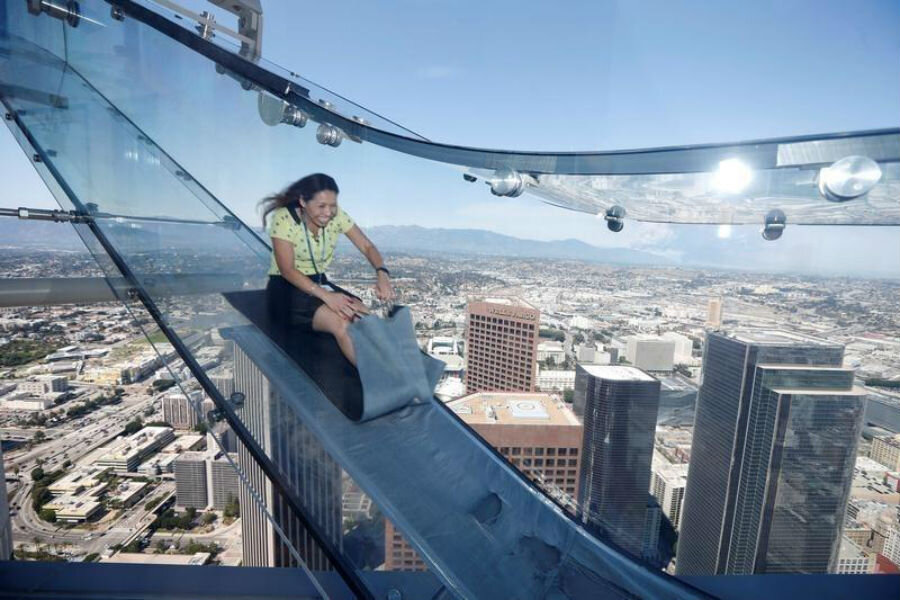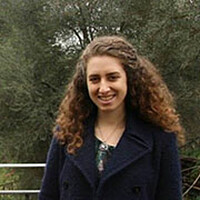Hoping to lure tourists, Los Angeles skyscraper installs a slide
Loading...
The Los Angeles US Bank Tower opened its 1,000-foot-high Skyslide on Saturday. Visitors can now buy $8 tickets to ride the 45-foot slide from the 70th to the 69th stories of the building, traveling smoothly from inside to an outdoor viewing deck. A day pass of $19-25 is required to get up to the slide.
According to the Skyspace website, the tower’s 360-degree panoramic view includes the Hollywood Sign, Dodger Stadium, and Santa Catalina Island. From the slide, a rider can see the tops of skyscrapers, the San Gabriel mountains, and miniature people.
The slide is part of the Singapore-based building owner OUE Ltd.’s project, Skyspace LA, which will attempt to bring new visitors to downtown Los Angeles. Skyspace is an amusement park on the tallest building west of the Mississippi, designed by the New York firm of I.M. Pei, whose observatory gives visitors a panoramic view of the city.
The ride parallels the Las Vegas “Skyjump” in form and name. Skyjump opened in 2010 and transformed its Vegas tower into a skydiving platform.
Unlike its counterpart, Skyslide is open to anyone, and is said to be safer than most amusement rides. “The Skyslide boasts a safe, thrilling experience unlike any other in the world,” said Lucy Rumantir, head of US operations for OUE, in a statement. “Guests of all ages will have the opportunity to transform their views of Los Angeles as they glide down, gazing at unparalleled views of the city.”
The slide is strong enough to hold "two blue whales," and remain intact, John Gamboa, OUE Americas senior vice president, told CNN. It is composed of 1.25-inch-thick three-ply glass and was made to withstand winds of up to 110 miles-per-hour – the strength of a category-two hurricane, which can blow down trees.
Making the thrill accessible increases the number of potential visitors. “You ... hit the side as you’re coming around the curve, so you’re really pressed up against the glass,” one visitor told the BBC after riding the slide for the first time. “You see the whole world below you, but it’s not really that scary.”
The ride is long-awaited, locally and globally. It has received plenty of press coverage and locals watched the ordeal of installing the slide, which required an airlift by a rented fire department helicopter and a complex pulley system to position the structure against the building.
Los Angeles residents also watched months of testing, including one test that involved filling the slide with sandbags, Gamboa told CNN.
"OUE has seen the long-term benefit of using this iconic building to do something that not only makes business sense but will become an economic driver for downtown," business consultant Hal Bastian told the LA Times. "It will put heads in beds and people in our restaurants."
Skyspace really is all about LA. Other than the slide and the observation deck, another 360-degree interactive level features the city’s cultural landscape and landmarks.






